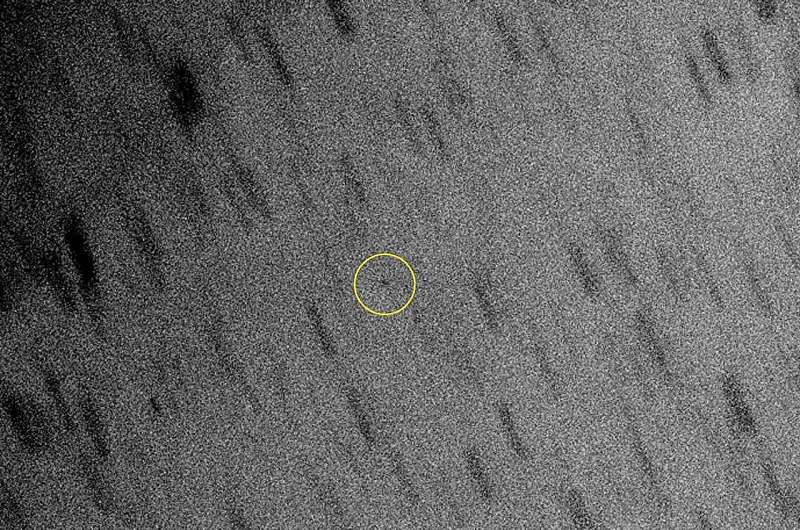This article has been reviewed according to Science X's editorial process and policies. Editors have highlighted the following attributes while ensuring the content's credibility:
fact-checked
trusted source
proofread
Subaru Telescope discovers the faintest moon around icy giant planets

Using some of the largest telescopes in the world, including the Subaru Telescope, a team of astronomers discovered three new natural satellites orbiting the outermost planets in our solar system—one around Uranus and two around Neptune. One of the new moons, initially detected by the Subaru Telescope, is the faintest moon ever discovered by ground-based telescopes.
"The three newly discovered moons are the faintest ever found around these two ice giant planets using ground-based telescopes," explains Scott Sheppard (Carnegie Institution for Science), who leads the research.
The new moon around Uranus, S/2023 U1, increases the total number of known moons orbiting the ice giant planet to 28. Initially detected using the Magellan Telescope in Chile in 2023, it was subsequently confirmed in earlier images captured by the Subaru Telescope and Magellan Telescope in 2021. With a diameter of just 8 kilometers, it is likely the smallest among Uranus' moons. It completes one orbit around the planet in 680 days.
The brighter of the two newfound Neptunian moons (S/2002 N5) is about 23 kilometers in size and takes almost 9 years to orbit the ice giant. It was first spotted in 2021, and the orbit was confirmed in 2022 and 2023 by the Magellan Telescope.
"Once S/2002 N5's orbit around Neptune was determined using the 2021, 2022, and 2023 observations, it was traced back to an object that was spotted near Neptune in 2002 but lost before it could be confirmed as orbiting the planet," Sheppard explains.
The other new Neptunian moon (S/2021 N1) is about 14 kilometers in size with an orbit of almost 27 years. This extremely faint object was first spotted in 2021 by the Subaru Telescope, and the orbit was confirmed through special observing time at the Very Large Telescope in Chile and the Gemini Telescope in Hawai'i. The discovery of these two new moons brings Neptune's known moon total to 16.
The new observations likely complete the inventories of Uranus' and Neptune's moons down to 8 and 14 kilometers respectively. In comparison, Jupiter is complete down to moons of about 2 kilometers in size, while Saturn is complete down to moons of about 3 kilometers in size.
The three new Uranian and Neptunian moons have distant, eccentric, and inclined orbits that suggest they were captured by the gravity of these planets at the same time or just after Uranus and Neptune formed from the ring of dust and debris that surrounded our sun in its infancy.
The new moons also show there are dynamical orbital groupings of outer moons around Uranus and Neptune. These groupings suggest once larger parent moons have been broken apart by past collisions, most likely with comets or asteroids, leaving the broken fragments behind in orbits similar to the original larger moon. These moon groupings show the early solar system was a very chaotic place with movement and collisions between various objects happening all of the time.
"All of the giant planets in our solar system have similar configurations for their outer moons, regardless of their size or the process by which they formed. Even Uranus, which is tipped on its side, has a similar moon population to the other giant planets orbiting our sun," says Sheppard.
Sheppard, who is hunting for Planet X beyond Neptune, hopes that by better understanding the history of how these outer moons were captured, new details about the tumultuous early years of our solar system's history and the movement of the planets on its outer edges will be revealed.
The discoveries were announced by the International Astronomical Union's Minor Planet Center on February 23, 2024.
Provided by Subaru Telescope




















